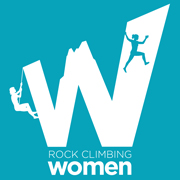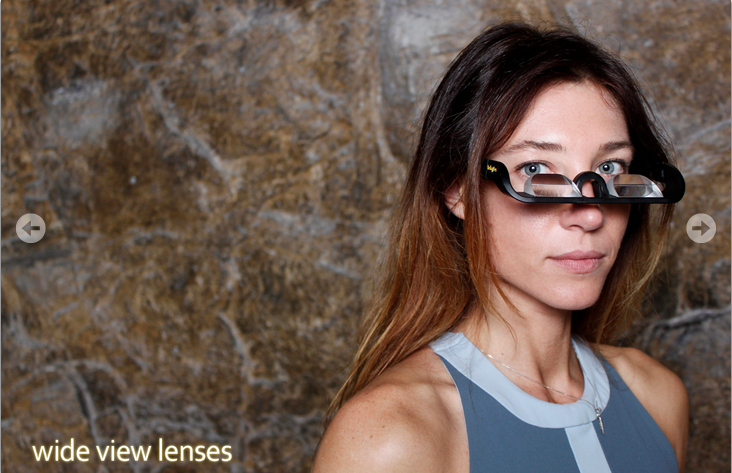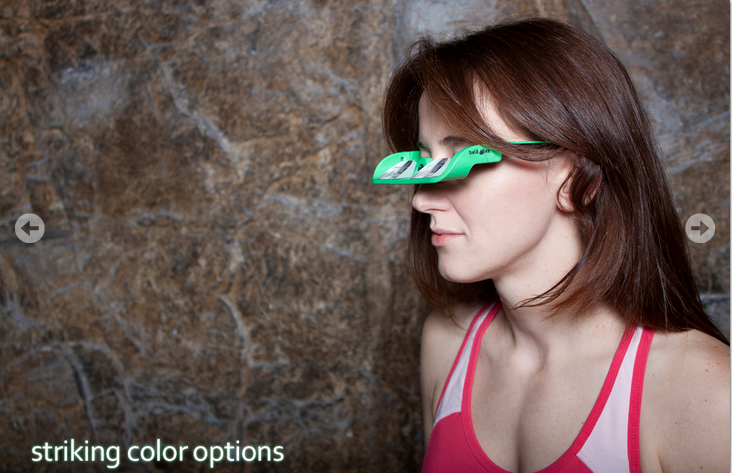I have to admit that when belay-glasses first came out years ago, I was skeptical. “Reflective lenses so you don’t even have to look at your climber? Geesh, how lazy are people?” I thought. But then as time went on, I started to notice myself becoming a less and less attentive belayer. I would start out watching my climber carefully, but then the neck-craning would begin.
A few minutes into a belay, my neck would start to hurt, and I’d crane to the right for a moment. And then I’d have to rest my neck completely, looking down at the ground. Then I’d look up again, craning to the left, doing my best to watch my climber as much as possible—but I wasn’t able to “stay” 100% with my climber. Meanwhile, I’d notice my friend belaying beside me, wearing belay glasses, and comfortably facing straight ahead while watching every movement her climber made above her. “Hmmmm, I thought; maybe there is something to this belay-glasses idea.”
Finally, just last year, a friend of mine accidentally duplicated a Belaggles order and ended up with an extra pair. Taking this a gentle nudge from the universe to try them out, my husband and I became Belaggles-wearers. I was pleasantly surprised by this new version of belay-glasses—they are sturdier than their predecessors, with the solid, plastic frames. And more importantly, they still allow for full visual access of your belay loop and device (when I’d tried earlier models, the glasses created a blind spot so I couldn’t see my hands or my belay device as I was moving rope through)—the Belaggles are all benefit, with no disadvantages!
I immediately became a believer, thoroughly enjoying the ability to keep my eyes on my climber 100% of the time, while never experiencing the neck discomfort I had fought for so many years. And then there was an unexpected bonus: the headaches I normally endured after a full-day of climbing (and belaying)—that I thought were merely a result of climbing itself—began to subside. Muscle pain and tension that I had assumed were created by the force of pulling down on holds, were actually a result of my head positioning while belaying. Hallelujah!—this unforeseen benefit turned out to be my favorite feature of Belaggles!
Now my only complaint is that I have to share my Belaggles with my husband, which is usually OK since we are usually climbing partners. But when I climb with someone else, and reach into my pack to discover that my Belaggles are in my husband’s pack (and not with me), I just about lose it! I think I need my very own pair!



